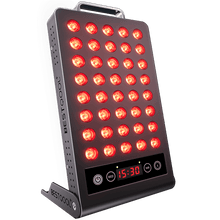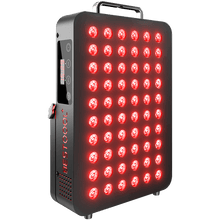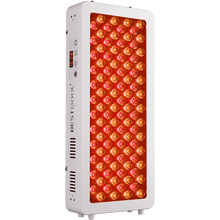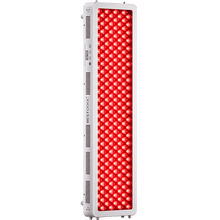If you ever find yourself tossing and turning at night due to low back or hip pain, your sacroiliac (SI) joint might be the sneaky culprit. The link between chronic SI joint pain and inadequate sleep is not discussed enough, but for people who experience it, it makes a palpable difference. Luckily, red light therapy (RLT) is becoming a new and emerging non-invasive solution to aid in the relief of pain and better sleep naturally. Here’s what you need to know.

Understanding the SI Joint Pain-Sleep Disruption Connection
Defining Sacroiliac (SI) Joint Pain and Its Common Symptoms
Your two sacroiliac joints sit where the lower part of the spine meets the pelvis on each side. They assist with weight shift from your upper body to your legs. When something goes wrong in these joints — due to inflammation, arthritis, injury or even pregnancy — it can cause localized pain in the lower back, buttocks or even down into the legs.
Common symptoms include:
- Pain in the lower back on one or both sides
- Stabbing or shooting pain in the lower back from sciatica, arthritis or other cause.
- Stiffness and loss of motion
How SI Joint Discomfort Sabotages Your Sleep Quality
Night is meant to be the time your body heals, but with chronic SI joint pain, restful sleep seems out of the question.
Pain can:
- Wake you up when you turn over.
- Cause discomfort in sleep positions, prompting frequent turning.
- Cause shallow sleep patterns that will leave you groggy and unrefreshed.
Introducing Red Light Therapy as a Potential Solution for Joint Pain
Explaining the Science: How Red and Near-Infrared Light Interact with Cells
Red light therapy (RLT) is a treatment that involves your body being exposed to low levels of red or near infrared (NIR) light. RLT doesn’t burn or damage the skin, like UV rays from the sun. Instead, light goes deep into tissue and interacts with cells — specifically your cells’ “energy factories,” called mitochondria.
The light energy also assists your mitochondria in creating more ATP (adenosine triphosphate), the energy molecule that jump-starts the cell’s repair and regeneration. In brief, red light really supercharges your body’s natural healing abilities.
Highlighting RLT's Non-Invasive Approach to Pain Management
Favorite thing about RLT? It’s gentle.
No surgery, no injections, no medication side effects. Just let the affected area bask in therapeutic light for a few minutes per session, and there's no other action required from you. Eventually, this might reduce inflammation, enhance circulation, and stimulate healing and tissue repair — key factors in calming SI joint pain.
How Red Light Therapy May Specifically Target SI Joint Discomfort
Investigating RLT's Potential to Reduce Local Inflammation
Inflammation is a key player when it comes to SI joint pain. Some studies have found that red and near-infrared light can decrease the production of pro-inflammatory molecules, such as cytokines. Less inflammation translates into less pressure on the nerves in and around the joint and less pain.
Exploring the Role of Improved Circulation in Pain Relief and Tissue Repair
Red light therapy additionally encourages better blood circulation.
Increased circulation also delivers more oxygen and nutrients to damaged tissues and flushes away waste products, including lactic acid, which causes post-exercise soreness. Increased circulation is crucial to promote faster healing and pain relief for SI joint.
Considering RLT's Influence on Cellular Energy and Repair Processes
When RLT energizes your cells, they may be able to perform crucial repairs more effectively. That includes fixing small muscle tears, calming aggravated connective tissues, and even maintaining nerve health. RLT provides a fundamental benefit that is more than just about covering pain; it raises cellular energy.

Practical Guidance: Using Red Light Therapy for SI Joint Pain at Home
Choosing Appropriate RLT Devices for Targeting the SI Joint Area
For SI joint pain, you’ll be looking for a gadget that can cover a pretty broad stretch of your lower back and hips. Look for:
- A panel or pad style device at a combination of red (630 to 660 nm) and near infrared (800 to 940 nm wavelengths).
- High intensity irradiances for better penetration
- Certifications or independent testing for safety and efficacy
- Handheld devices can do the trick as well, but panels can be easier to position on the back.
General Recommendations for Application: Frequency, Duration, and Placement
Consistency is the most important part of red light therapy. A good starting guideline:
- Regularity: 3-5 times per week
- Time: 15-20 minutes per session
- Position: Focus light directly onto the SI region (6 inches) as specified by the manufacturer.
A large number of users report noticing a change within a couple of weeks of continuous use, including a reduction in pain and stiffness.
The Importance of Consistency for Potential Benefits
Red light therapy is not a magic bullet. And like building muscle or healing a wound, it needs a sustained, repeated stimulus for long term results.
Think of it as “watering” your cells — regular shots make them grow stronger over time.
Important Considerations and Integrating RLT into a Holistic Approach
Why Obtaining an Accurate Diagnosis for SI Joint Pain is Crucial?
Before you start any self-treatment it’s important to ensure that the pain is actually originating from the SI joint. Other conditions — such as herniated discs, hip bursitis or even sciatica — may also masquerade as SI joint symptoms.
Some specific tests (e.g. FABER test and Gaenslen’s test) can be performed by a knowledgeable healthcare provider to assist in confirming the diagnosis.
Viewing RLT as a Complementary Therapy, Not a Cure-All
Though RLT does have promise, it’s good to pair it with other strategies, including:
- Soft physical therapy exercises
- Anti-inflammatory diets
- Sleep position (a pillow between the knees can help!)
With multiple approaches, you give your body the best opportunity to heal itself.
Consulting with Your Healthcare Provider Before Starting RLT
Even though red light therapy is typically very safe, it’s a good idea to talk to your doctor or physiotherapist, especially if you have health problems or are pregnant. They can advise you on safe usage.
Conclusion
If you’ve been losing sleep from SI joint pain, it’s time to try something new. Red light therapy leverages your body’s natural ability to heal, providing safe, non-invasive pain relief. Though not a quick fix, with time and the right approach, RLT may be the key to helping you move, sleep, and feel better naturally.














 Small
Small

 Moderate
Moderate

 Moderate
Moderate

 Moderate
Moderate

 Full
Full



